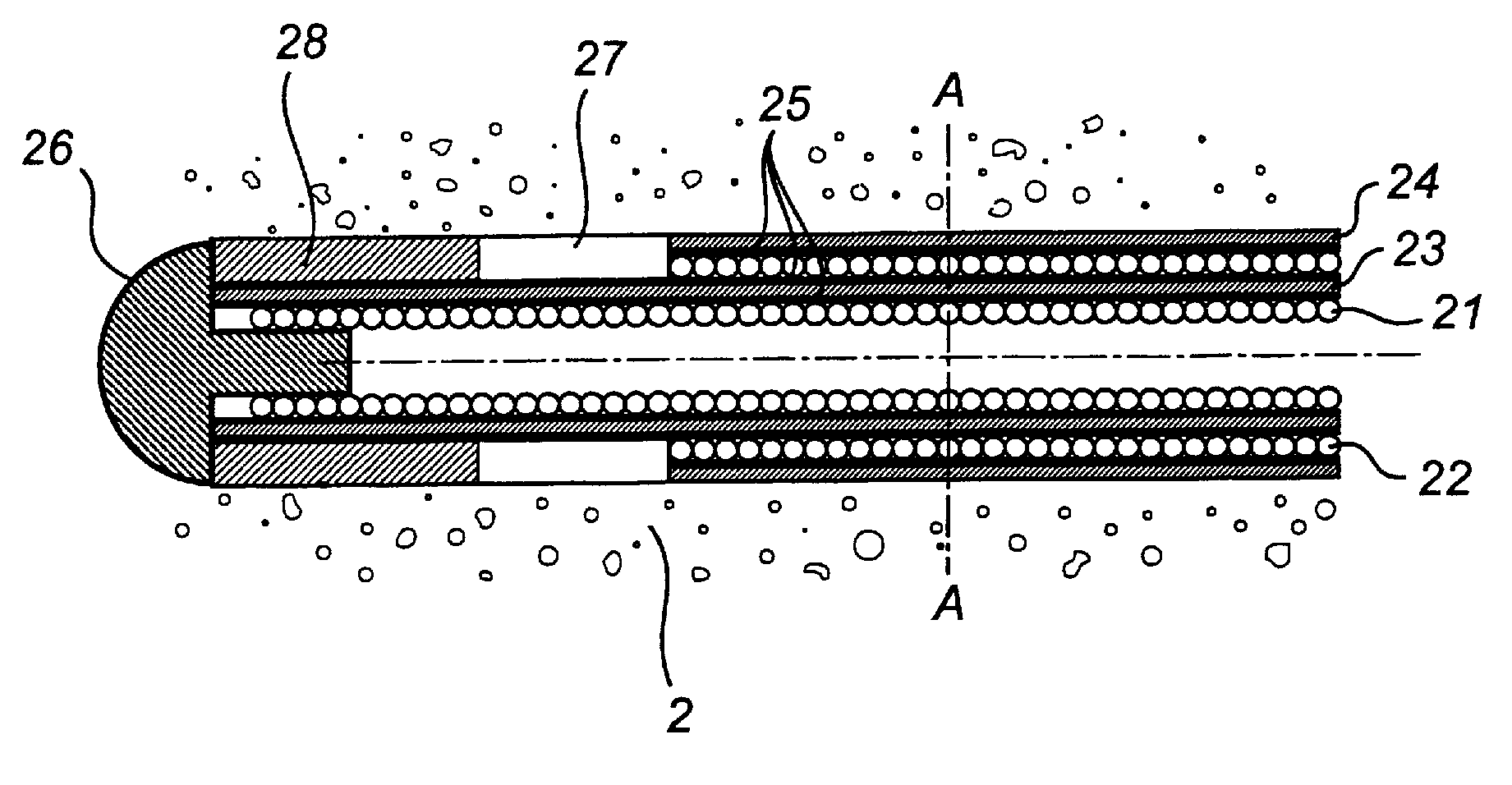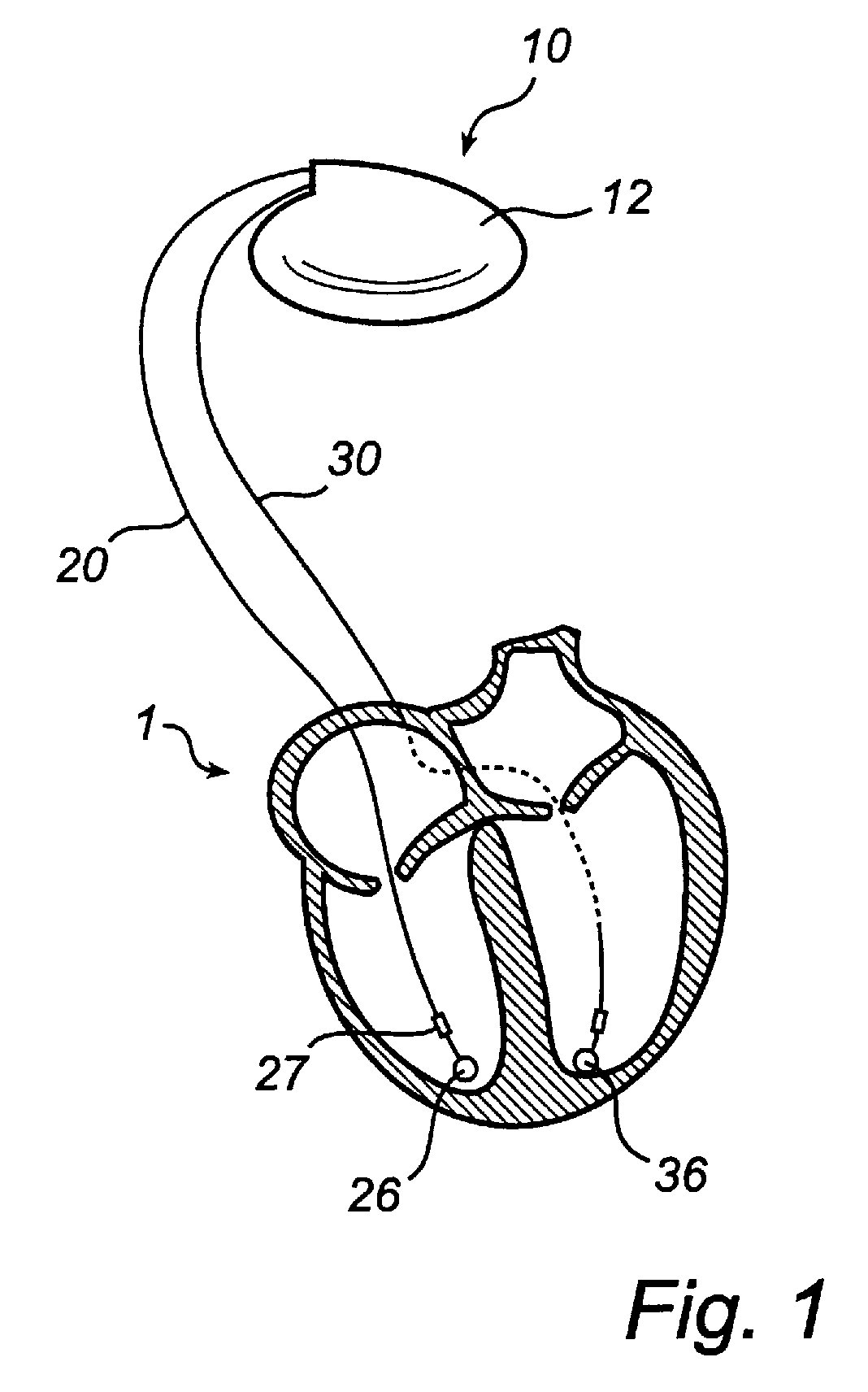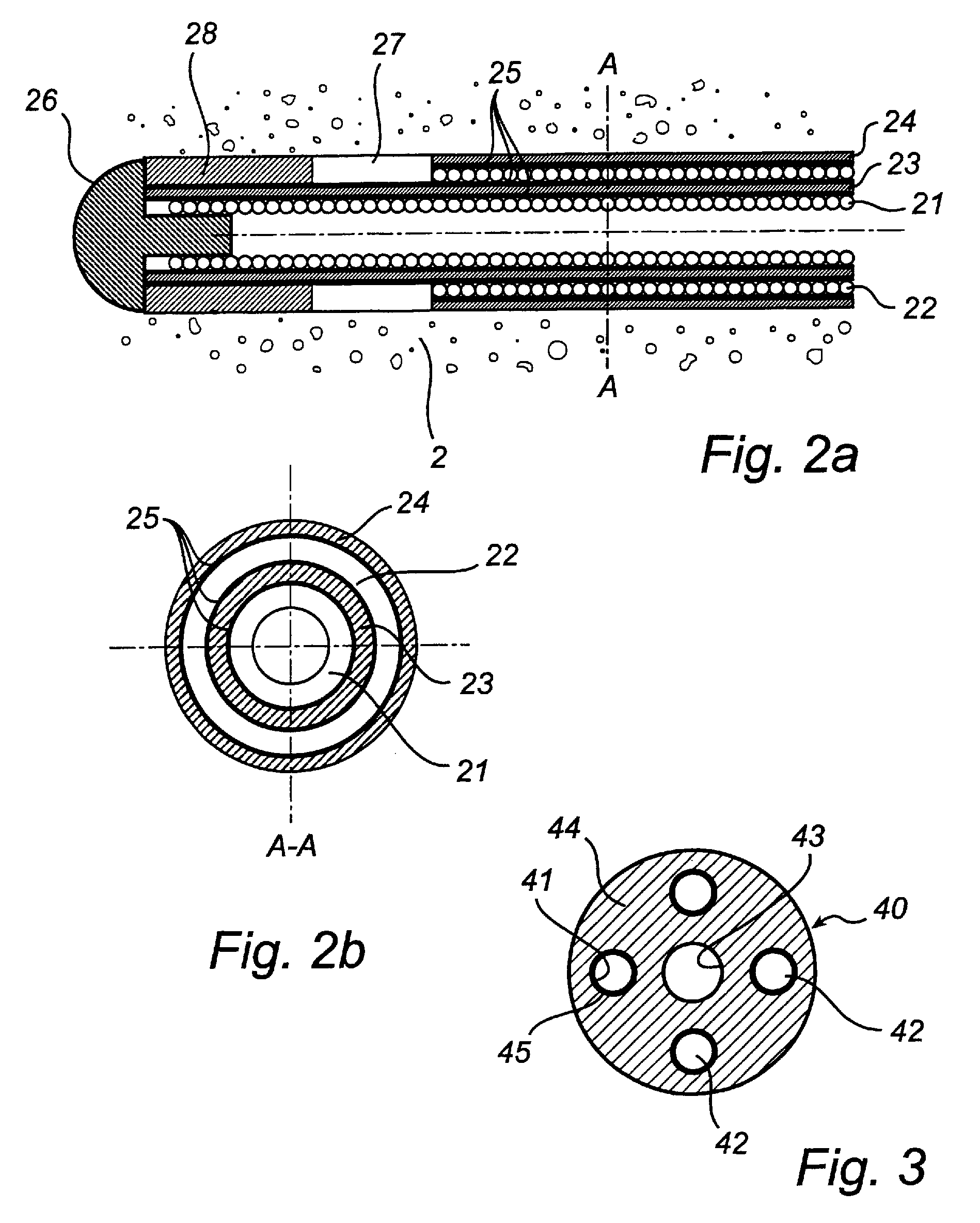Implantable medical lead
a medical lead and implantable technology, applied in the field of implantable medical leads, can solve the problems of difficult separation of the contribution of the motion artifact from the useful signal contribution from pressure changes, the cross-section dimension of the cardiac lead is decreased, and the resistance of the lead is increased
- Summary
- Abstract
- Description
- Claims
- Application Information
AI Technical Summary
Benefits of technology
Problems solved by technology
Method used
Image
Examples
Embodiment Construction
[0034]The following is a description of preferred embodiments in accordance with the present invention. This description is intended for describing the general principles of the invention and is not to be taken in a limiting sense. Thus, even though a biventricular heart stimulator for sensing and stimulating in both ventricles is being illustrated, the invention is also applicable to heart stimulators arranged for sensing and stimulating in one ventricle only, and / or for stimulating in the atria of a human heart. Furthermore, the invention is also applicable to implantable cardioverter-defibrillators (ICD).
[0035]Referring first to FIG. 1, there is shown an implantable heart stimulator 10 in electrical communication with a human heart 1 via two cardiac leads 20, 30 arranged for stimulation and sensing. Moreover, the heart stimulator 10 comprises electronic circuitry and a battery contained within a hermetically sealed pacemaker housing 12. The housing 12 has a metallic casing of tit...
PUM
 Login to View More
Login to View More Abstract
Description
Claims
Application Information
 Login to View More
Login to View More - R&D
- Intellectual Property
- Life Sciences
- Materials
- Tech Scout
- Unparalleled Data Quality
- Higher Quality Content
- 60% Fewer Hallucinations
Browse by: Latest US Patents, China's latest patents, Technical Efficacy Thesaurus, Application Domain, Technology Topic, Popular Technical Reports.
© 2025 PatSnap. All rights reserved.Legal|Privacy policy|Modern Slavery Act Transparency Statement|Sitemap|About US| Contact US: help@patsnap.com



